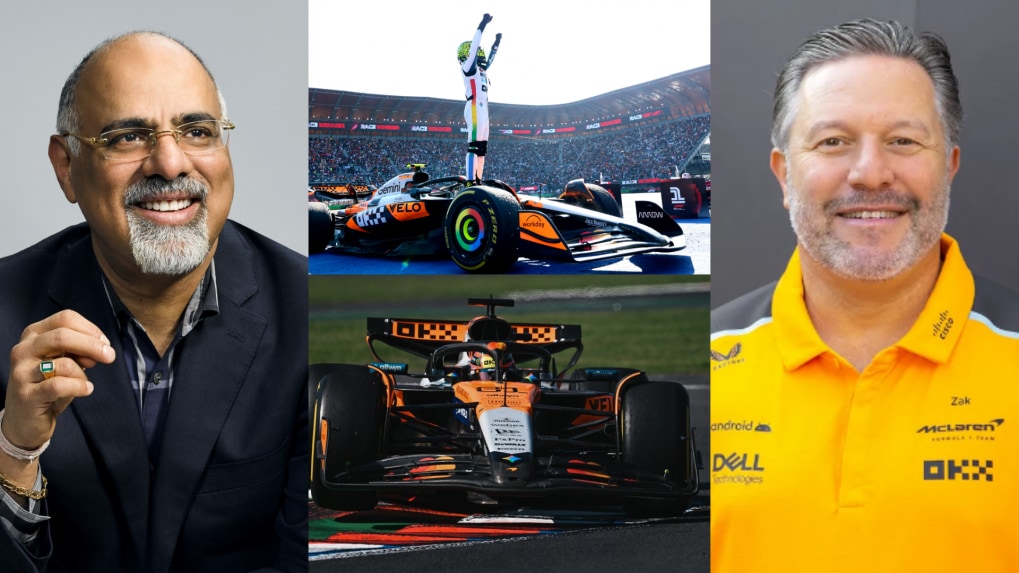Digital
Why OpenAI is hiring 100 ex-bankers: Inside the ChatGPT-maker's secret project to automate Wall Street's grunt work

For decades, McLaren was synonymous with precision engineering and British racing excellence. But in today’s Formula One — where streaming, celebrity, and social media have redrawn the sport’s borders — McLaren’s transformation has been as much about storytelling as speed.
Sitting across from Storyboard18's editor Delshad Irani in an exclusive conversation, Zak Brown, the team’s chief executive, summed up the shift with characteristic bluntness. “We recognize we’re in the sport and entertainment business,” he said. “At the end of the day, it’s all one and the same — we’re all about our fans.”
Brown, a former racing driver turned marketing entrepreneur, has redefined McLaren’s playbook since taking over in 2016. Under his leadership, the team has leaned into its cultural moment — embracing Netflix-era fandom, digital engagement, and bold commercial partnerships. The most recent and perhaps most emblematic: its elevated tie-up with Mastercard.
For Mastercard’s global chief marketing and communications officer, Raja Rajamannar, the alliance isn’t just about speed on the track — it’s about deepening emotional engagement off it. “We’ve always tried to address the passions of consumers,” he said. “Sports is one of the most important passion categories, and Formula One is the fastest-growing among them.”
When Mastercard began evaluating potential partners within F1, Rajamannar said the research was unequivocal. “McLaren was by far the most loved brand,” he noted. “Forty percent of women admired McLaren more than any other team. And 40 percent of the F1 audience today is women. That was a powerful insight.”
The chemistry between the two brands was instant. “Zak is a quintessential marketing person who puts fans first,” Rajamannar said. “We speak the same language.”
A Partnership Built for the Netflix Era
The partnership’s defining feature, Rajamannar explained, is “curating experiences that money can’t buy.” Mastercard has rolled out Team Priceless, an initiative that gives select fans unprecedented access — from garage tours to driver briefings, the kind of behind-the-scenes intimacy that was once unthinkable in Formula One’s tightly controlled paddocks.
Brown sees such access not as a dilution of sport but as its evolution. “Sport and entertainment are one and the same,” he said. “Fans can participate in the entire journey. There’s no reason they can’t feel part of it.”
That shift toward openness — once controversial — has proven transformative. Brown recalled how some teams initially resisted Netflix’s Drive to Survive series, wary of exposing too much. “It had historically been a very closed sport,” he said. “But once we embraced access and inclusivity, we saw how it built loyalty and expanded the audience, especially among youth and women.”
The Papaya Era
McLaren’s “Papaya Era,” as Brown calls it — a nod to the team’s return to its iconic orange livery — is both a design choice and a metaphor. It marks the team’s return to its roots, while signaling a renewed openness to fans and culture.
“Inclusivity is the secret sauce,” Brown said. “All teams have great technology and facilities. What makes the difference is people — fans, partners, and team members.”
Only about one percent of McLaren’s fans ever attend a race in person. The challenge, Brown said, is to build “digital paddocks” — virtual and experiential spaces that can reach millions. Mastercard’s global network and experience-led marketing fit neatly into that strategy.
Rajamannar said that even in markets without F1 races — like Romania — Mastercard’s McLaren co-branded cards have seen extraordinary uptake. “There isn’t even a race there, yet the card is getting fantastic reception,” he said. “It’s proof that fandom and aspiration transcend geography.”
India: The Missing Piece of the Grid
Both executives spoke passionately about India — as a market, an audience, and a cultural force.
“All the time, we say we need to be in India,” Brown said. “It’s a huge market with great consumers and massive potential. Quite frankly, India is a big hole in the F1 calendar. We need to be there.”
Rajamannar, who grew up in India, agreed — but with a marketer’s caution. “We’re testing the waters,” he said when asked about the possibility of a McLaren-Mastercard co-branded card in India. “India is gigantic. Even a niche in India is larger than an entire country elsewhere. I’d love to make it happen.”
The pair’s shared optimism reflects a broader shift in how Formula One sees growth. Once Eurocentric, the sport now finds its future audience in the U.S., the Middle East, and increasingly, Asia. India, they both implied, could be its next breakout circuit.
The Business of Belonging
For Mastercard, the McLaren partnership is both a marketing experiment and a business bet — one that trades on belonging as much as branding. “We’re bringing to F1 everything we’ve learned from other passion points,” Rajamannar said. “It’s about making fans feel part of something bigger — something priceless.”
Brown framed the collaboration in terms of shared purpose. “Ultimately, it’s about growing fans — from not fans to fans to avid fans,” he said. “And Mastercard can help us do that across all those groups.”
Both men insist the collaboration is about more than sponsorship. It’s about reimagining what a racing team — and a global brand — looks like in a hybrid age of sport, technology, and entertainment.
And in that race for relevance, McLaren and Mastercard seem to be accelerating together — not just toward victory laps, but toward whole new markets of imagination and fandom.
Watch out for the full conversation on Media Dialogues With Storyboard18 on our YouTube channel and on CNBC-TV18.
In a wide-ranging interview with Storyboard18, Sorrell delivers his frankest assessment yet of how the deal will redefine creativity, media, and talent across markets.